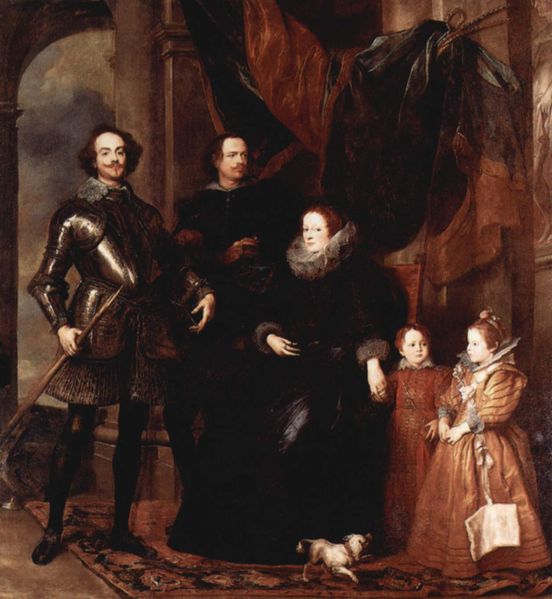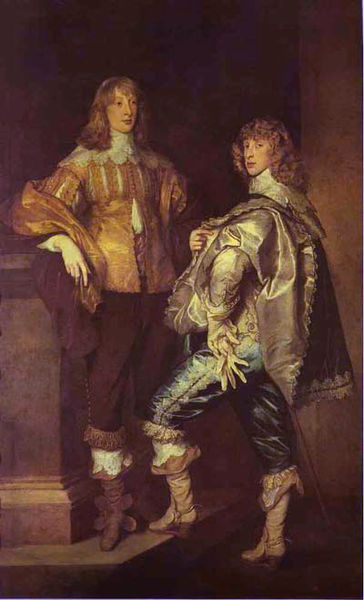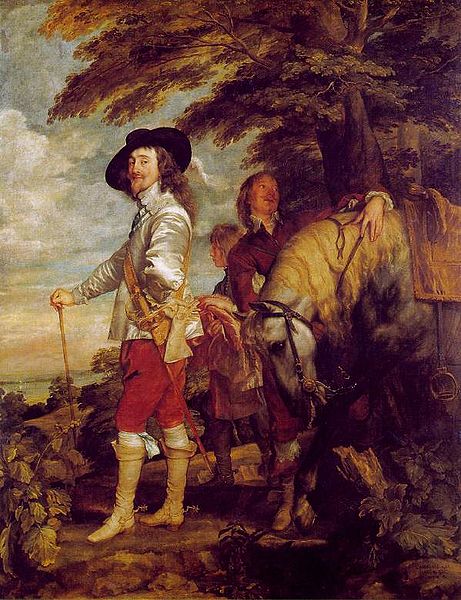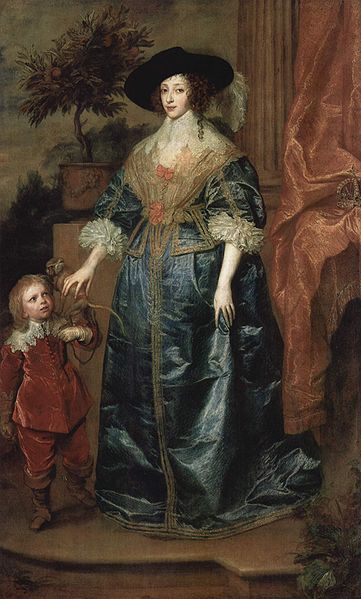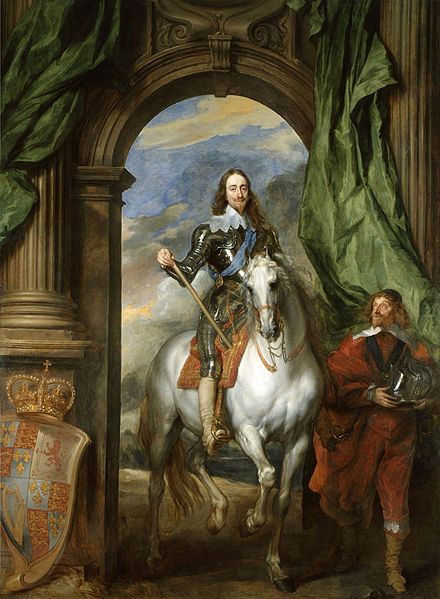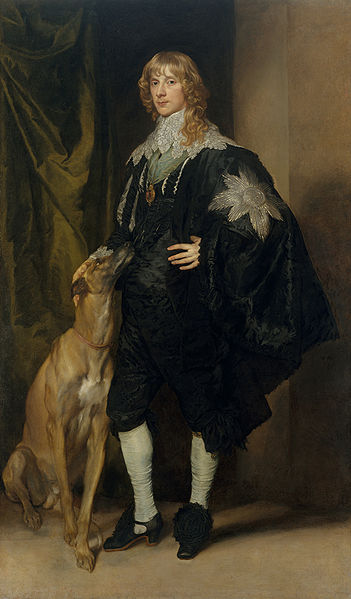<Back to Index>
- Physicist Robert A. Millikan, 1868
- Painter Anthony van Dyck, 1599
- President of the Philippines Emilio Aguinaldo y Famy, 1869
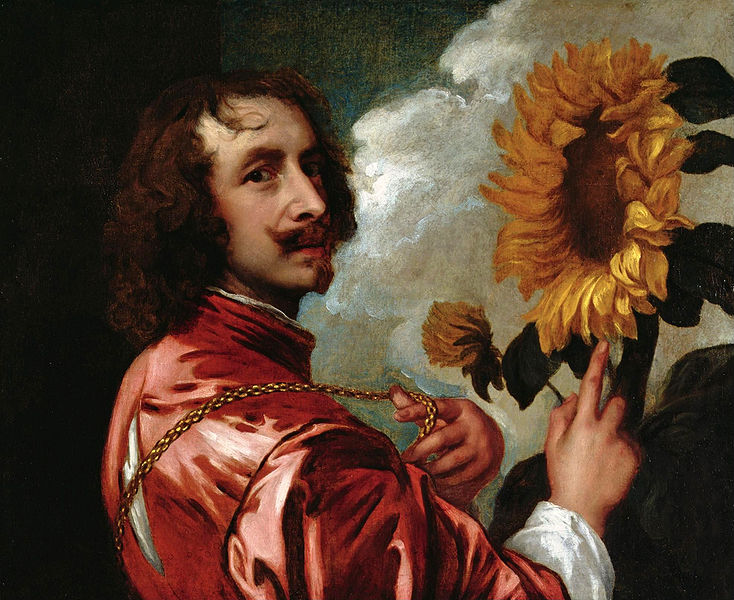
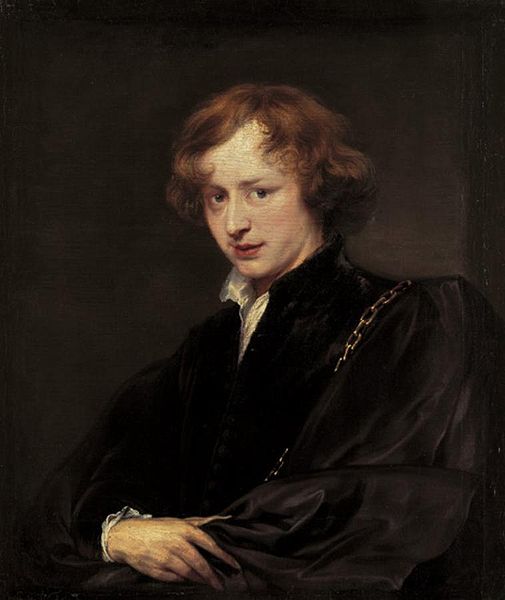
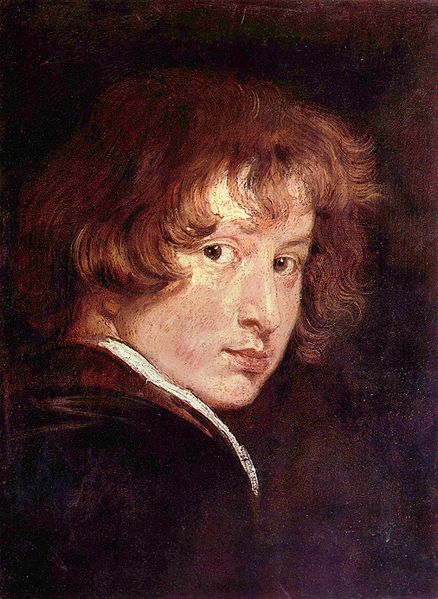
Sir Anthony van Dyck (22 March 1599 – 9 December 1641) was a Flemish Baroque artist who became the leading court painter in England. He is most famous for his portraits of King Charles I of England and Scotland and his family and court, painted with a relaxed elegance that was to be the dominant influence on English portrait-painting for the next 150 years. He also painted biblical and mythological subjects, displayed outstanding facility as a draftsman, and was an important innovator in watercolour and etching.
Van Dyck was born to prosperous parents in Antwerp. His talent was evident very early, and he was studying painting with Hendrick van Balen by 1609, and became an independent painter around 1615, setting up a workshop with his even younger friend Jan Brueghel the Younger. By the age of fifteen he was already a highly accomplished artist, as his Self-portrait, 1613-14, shows. He was admitted to the Antwerp painters' Guild of Saint Luke as a free master by February 1618. Within a few years he was to be the chief assistant to the dominant master of Antwerp, and the whole of Northern Europe, Peter Paul Rubens, who made much use of sub-contracted artists as well as his own large workshop. His influence on the young artist was immense; Rubens referred to the nineteen-year-old van Dyck as 'the best of my pupils'. At the same time the dominance of Rubens in the small and declining city of Antwerp probably explains why, despite his periodic returns to the city, van Dyck spent most of his career abroad. In 1620, in the Rubens' contract for the major commission for the ceiling of the Jesuit church at Antwerp (now destroyed), van Dyck is specified as one of the "discipelen" who was to execute the paintings to Rubens' designs. In 1620, at the instigation of the brother of the Duke of Buckingham, van Dyck went to England for the first time where he worked for King James I and James VI, receiving £100. It was in London in the collection of Earl of Arundel that he first saw the work of Titian, whose use of colour and subtle modeling of form would prove transformational, offering a new stylistic language that would enrich the compositional lessons learned from Rubens.
After about four months he returned to Flanders, but moved on in late 1621 to Italy,
where he remained for 6 years, studying the Italian masters and
beginning his career as a successful portraitist. He was already
presenting himself as a figure of consequence, annoying the rather
bohemian Northern artist's colony in Rome. He was mostly based in Genoa, although he also travelled extensively to other cities, and stayed for some time in Palermo in Sicily. For the Genoese aristocracy, then in a final flush of prosperity, he developed a full-length portrait style, drawing on Veronese and
Titian as well as Rubens' style from his own period in Genoa, where
extremely tall but graceful figures look down on the viewer with great
hauteur. In 1627, he went back to Antwerp where he remained for five
years, painting more affable portraits which still made his Flemish
patrons look as stylish as possible. A life-size group portrait of
twenty-four City Councillors of Brussels he painted for the council-chamber was destroyed in 1695.
He was evidently very charming to his patrons, and, like Rubens, well
able to mix in aristocratic and court circles, which added to his
ability to obtain commissions. By 1630 he was described as the court
painter of the Habsburg Governor of Flanders, the Archduchess Isabella.
In this period he also produced many religious works, including large altar pieces, and began his printmaking. King
Charles I was the most passionate and generous collector of art among
the British monarchs, and saw art as a way of promoting his grandiose
view of the monarchy. In 1628 he bought the fabulous collection that the Gonzagas of Mantua were
forced to dispose of, and he had been trying since his accession in
1625 to bring leading foreign painters to England. In 1626 he was able
to persuade Orazio Gentileschi to settle in England, later to be joined by his daughter Artemesia and
some of his sons. Rubens was an especial target, who eventually came on
a diplomatic mission, which included painting, in 1630, and later
supplied more paintings from Antwerp. He was very well treated during
his nine month visit, during which he was knighted. Charles' court portraitist Daniel Mytens,
was a somewhat pedestrian Fleming. Charles was extremely short (less
than five foot tall) and presented challenges to a portraitist. Van
Dyck had remained in touch with the English court, and had helped King
Charles' agents in their search for pictures. He had also sent back
some of his own works, including a portrait (1623) of himself with Endymion Porter, one of Charles's agents, a mythology (Rinaldo and Armida, 1629, now in the Baltimore Museum of Art), and a religious work for the Queen. He had also painted Charles's sister, Queen Elizabeth of Bohemia in the Hague in
1632. In April that year, van Dyck returned to London, and was taken
under the wing of the court immediately, being knighted in July and at
the same time receiving a pension of £200 per year, in the grant
of which he was described as principalle Paynter in ordinary to their majesties.
He was well paid for paintings in addition to this, at least in theory,
as King Charles did not actually pay over his pension for five years,
and reduced the price of many paintings. He was provided with a house
on the river at Blackfriars, then just outside the City and hence avoiding the monopoly of the Painters Guild. A suite of rooms in Eltham Palace,
no longer used by the Royal family, was also provided as a country
retreat. His Blackfriars studio was frequently visited by the King and
Queen (later a special causeway was built to ease their access), who
hardly sat for another painter whilst van Dyck lived. He was an immediate success in England, rapidly painting a large number of portraits of the King and Queen Henrietta Maria,
as well as their children. Many portraits were done in several
versions, to be sent as diplomatic gifts or given to supporters of the
increasingly embattled king. Although his portraits have created the classic idea of "Cavalier" style and dress, in fact a majority of his most important patrons in the nobility, such as Lord Wharton and the Earls of Bedford, Northumberland and Pembroke, took the Parliamentarian side in the English Civil War that broke out soon after his death. Van Dyck became a "denizen", effectively a citizen, in 1638 and married Mary, the daughter of Lord Ruthven and a Lady in waiting to the Queen, in 1639-40; this may have been instigated by the King in an attempt to keep him in England. He
had spent most of 1634 in Antwerp, returning the following year, and in
1640-41, as the Civil War loomed, spent several months in Flanders and France. In 1640 he accompanied prince John Casimir of Poland after he was freed from French imprisonment; he also painted the prince's portrait. He left again in the summer of 1641, but fell seriously ill in Paris and returned hurriedly to London, where he died soon after in his house at Blackfriars. He
left a daughter each by his wife and mistress, the first only ten days
old. Both were provided for, and both ended up living in Flanders. He was buried in Old St. Paul's Cathedral, where the king erected a monument in his memory. With the partial exception of Holbein,
van Dyck and his exact contemporary Velázquez were the first
painters of pre-eminent talent to work mainly as Court portraitists.
The slightly younger Rembrandt was also to work mainly as a portraitist for a period. A
variety of factors meant that in the 17th century demand for portraits
was stronger than for other types of work. Van Dyck tried to persuade
Charles to commission him to do a large-scale series of works on the
history of the Order of the Garter for the Banqueting House, Whitehall, for which Rubens had earlier done the huge ceiling paintings (sending them from Antwerp).
A sketch for one wall remains, but by 1638 Charles was too short of
money to proceed. In his visits to Paris in his last years van
Dyck tried to obtain the commission to paint the Grande Gallerie of the Louvre without success. A fairly small number of landscape pen and wash drawings or watercolours made
in England played an important part in introducing the Flemish
watercolour landscape tradition to England. Some are studies, which
reappear in the background of paintings, but many are signed and dated
and were probably regarded as finished works to be given as presents.
Several of the most detailed are of Rye, a port for ships to the Continent, suggesting that van Dyck did them casually whilst waiting for wind or tide to improve.
Probably during his period in Antwerp after his return from Italy, van Dyck began his Iconography, eventually a very large series of prints with half-length portraits of eminent contemporaries. Van Dyck produced drawings, and for eighteen of the portraits he himself etched with great brilliance the heads and the main outlines of the figure, for an engraver to
work up: "Portrait etching had scarcely had an existence before his
time, and in his work it suddenly appears at the highest point ever
reached in the art". His
great success compelled van Dyck to maintain a large workshop in
London, a studio which was to become "virtually a production line for
portraits". According to a visitor to his studio he usually only made a
drawing on paper, which was then enlarged onto canvas by an assistant;
he then painted the head himself. The clothes were left at the studio
and often sent out to specialists.[21]In his last years these studio collaborations accounted for some decline in the quality of work. The relatively few names of his
assistants that are known are Dutch or Flemish; he probably preferred
to use trained Flemings, as no English equivalent training yet existed. Adriaen Hanneman (1604-71) returned to his native Hague in 1638 to become the leading portraitist there. Van
Dyck's enormous influence of English art does not come from a tradition
handed down through his pupils; in fact it is not possible to document
a connection to his studio for any English painter of any significance.
